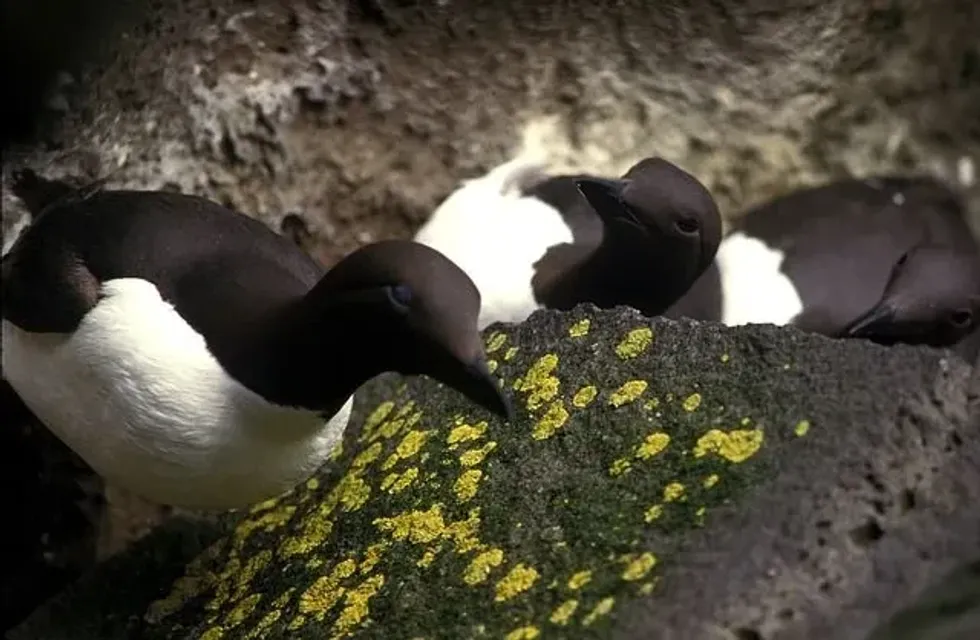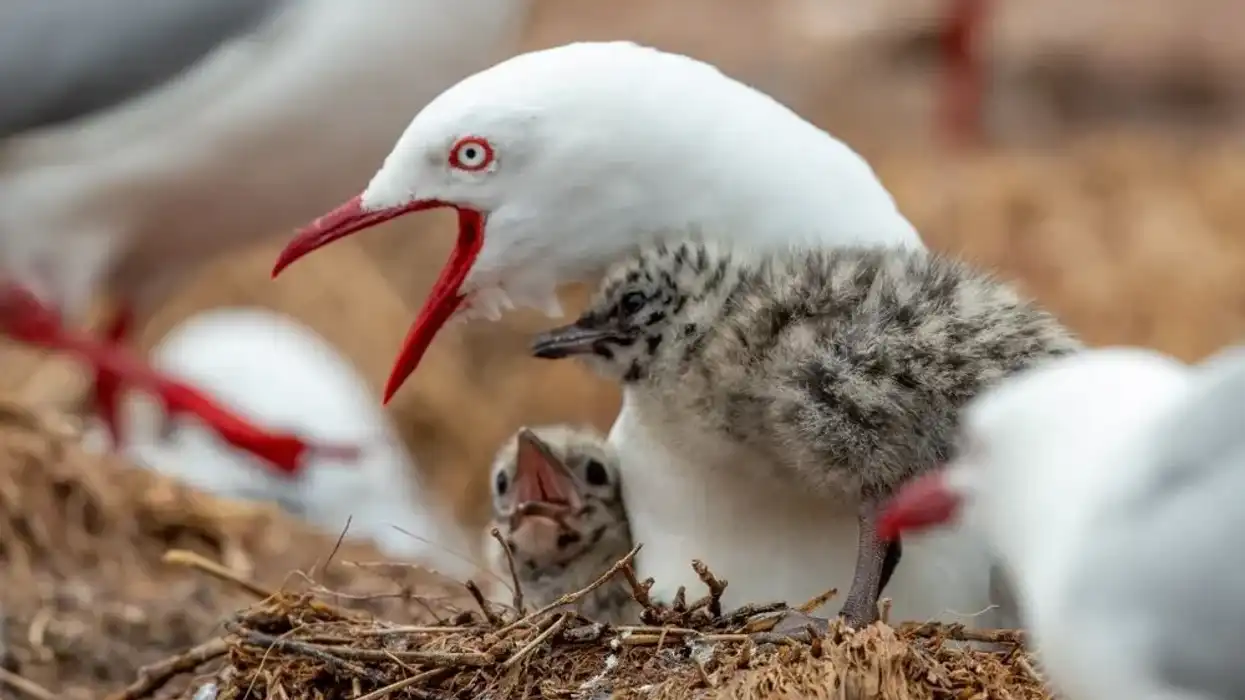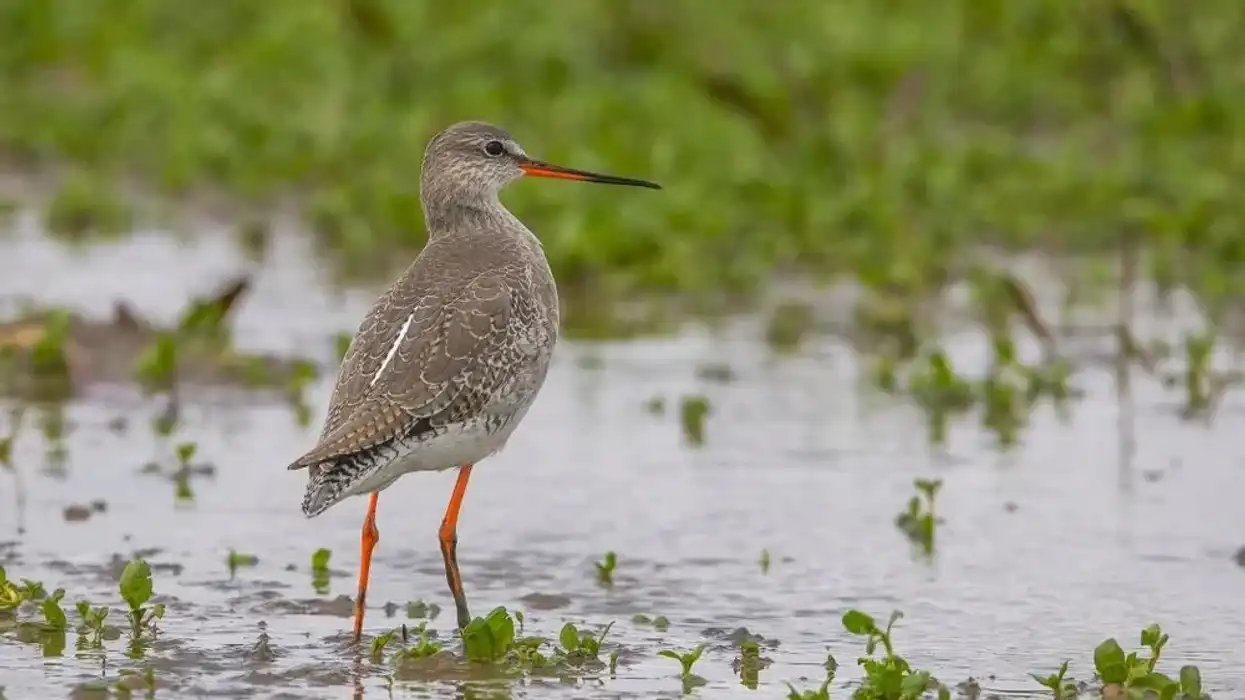The common murre (Uria aalge) is a kind of bird belonging to North America, Asia, and Europe. The North American population is native to both the Atlantic coast and Pacific coast. There are a total of seven common murre sub-species.
These birds are mostly found in the open ocean and sea, while nesting is done on any rocky cliff or coast. In any given region, these birds form a colony to live.
Since common murres are also black and white in color, people might mistake them for penguins. Common murre populations are on the rise. Their range can significantly change due to differences in winter and summer temperatures.
The North American population of this species has faced major threats due to starvation and reduced breeding ability. These birds are migratory in nature and can spend the winter in other regions.
To learn more about common murres, continue reading the article! You can also check out hornbill and ring-necked duck.
Common Murre Interesting Facts
What type of animal is a common murre?
The common murre is a kind of bird. They are usually found living in colonies.
What class of animal does a common murre belong to?
Common murre (Uria aalge) birds belong to the class Aves. They are a part of the Alcidae family.
How many common murres are there in the world?
According to the International Union for Conservation of Nature (IUCN), the common murre population has an increasing trend. Their population is estimated to be 18 million or more.
Where does a common murre live?
Common murres are found in North America, Europe, and Asia. During the breeding season, their population is found along the Pacific coast, from the western region of Alaska to central California; and in the Atlantic coast, they are present from Labrador to Nova Scotia.
In Europe and Asia, they are found in Ireland, Britain, Germany, Russia, Korea, Japan, and so on.
What is a common murre's habitat?
The common murre bird spends much of its time in seas and the open ocean. However, during the breeding season, they are found by sea cliffs, islands, and sea stacks. These birds do not build any nests. Their eggs are laid on the rocky surface of the cliff or coast.
Who do common murres live with?
These birds are known to live in densely packed colonies. In fact, their colonies are so populated, most of the birds are in constant physical contact with each other.
Such colonies are known as loomeries. These colonies located on coasts and islands also have birds of other species nesting as well. In such a multi-species colony, common murries reside on the upper part and edges of the cliff.
How long does a common murre live?
The average life of a common murre bird is 317 months (26 years).
How do they reproduce?
Common murres are monogamous in nature and form large breeding colonies during the breeding season. In the population of the Atlantic coast species, the common murre eggs are laid between the months of May and July, and on the Pacific coast, this occurs from March to July.
Each female only lays one egg. The common murre egg is pear-shaped and comes in variable colors like white, lilac, or brown.
In the breeding colonies, both the parent birds are responsible for incubation, which lasts for about 34 days. Once the chick hatches out, both parents provide care.
What is their conservation status?
The conservation status of common murres is marked as Least Concern by the International Union for Conservation of Nature. Though their population is increasing, they are threatened by climate change and oil spills. Die-offs are also observed in mass numbers in common murre populations, sporadically.
Common Murre Fun Facts
What do common murres look like?

Common murres have black or dark brown feathers on the head and white feathers on their underbelly. The neck and back are also black or dark brown. Their secondary feathers have white tips. The beaks appear long and slender.
Common murres in North Atlantic have a slight variation. This population has a white eye-ring that extends to the back of the head. All their tails are rounded and small.
How cute are they?
The species of birds appear very cute and adorable. Their standing posture and color make them look like a penguin.
How do they communicate?
Common murres communicate using visual, chemical, and auditory methods. Their most common vocalization is a soft purr. They also make other low-pitched calls like 'aaarh', especially during nesting or breeding. Both the male and female birds display various gestures to each other in the courtship period before mating.
How big is a common murre?
The length of the common murre birds is between 15-18 in (38-46 cm). Their height ranges from 16.5-17.7 in (42-45 cm). The razorbill birds, which appear very similar to the common murres, and are part of the same family, are almost the same size as murres.
How fast can a common murre fly?
Common murres are able to fly with a speed of 50 mph (80.4 kph). These birds use fast and steady wing beats to fly with this speed. Since they have a relatively heavier body and small wings, they need to do a short run in order to get enough speed to fly.
How much does a common murre weigh?
This species of birds have a weight range of 33.3-33.7 oz (945-1,044 g). The chicks that hatch from the eggs usually weigh between 2-3.3 oz (55-95 g).
What are their male and female names of the species?
In this species, the male birds are known as male common murres and the female birds are known as female common murres.
What would you call a baby common murre?
A baby common murre is called a chick.
What do they eat?
Common murres are carnivorous in nature and mainly feed on fish. Hence, they can also be called piscivorous.
Some of the common fish species that become part of their diet are cod, sandeel, sprat, and herring. Apart from fish, they also eat marine worms, mollusks, squids, and shrimps. In the Gulf of Alaska and the Bering Sea, they feed on pollock fishes, other types of small fish, and squid.
Are they dangerous?
Common murres do show aggression among themselves, especially when their sex ratio is not even. However, there isn't any immediate danger from them to humans.
Would they make a good pet?
Common murres are not usually kept as pets. Since these birds have very special requirements, they are much more suited to their natural habitat or captive areas like zoos where their natural ecosystem and living conditions can be mimicked.
Did you know...
These birds are capable of diving 10o feet underwater in the ocean or sea to catch their prey. They are also able to fly underwater using their wings and can remain submerged for up to a minute.
Threats to the common murre
Two of the most prevalent threats to common murres are climate change and oil spills.
Large-scale oil spills result in the death of common murre birds, as ingesting crude oil can lead to damaged internal organs. The Common Murre Restoration Project aims at reestablishing murre populations in Central California which were severely affected due to an oil spill.
Pollution and subsequent climate change can lead to a significant alteration in the common range of this species. In the current climate scenario, their range is stable and maintained.
However, if the temperatures were to increase by 3 Celsius in the summer season in North America, much of their range from the west along the Pacific Ocean (from places like California) would be lost. However, in many places in the Northern parts, their range would see an increase.
The best common murre seasons
Common murres spend most of the winter seasons in the open ocean and sea. However, they can be seen on cliffs and coasts during the breeding season from around March.
Cape Meares in Oregon in the U.S. has one of the most populous colonies of this bird. There are also 18 known nesting locations of the common murre in the Washington coastline.
Here at Kidadl, we have carefully created lots of interesting family-friendly animal facts for everyone to discover! Learn more about some other birds including laughing gull, or palm warbler.
You can even occupy yourself at home by drawing one on our Common murre coloring pages.










